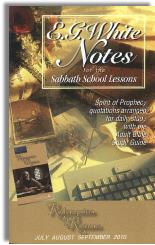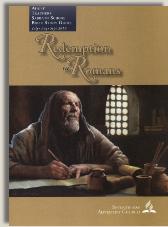|
||||||||||||||
Commentary on "Jew and Gentile"
Day 3: Monday, July 5, 2010 - Jewish Laws and Regulations
Overview
The lesson opens with the suggestion the reader skim through Leviticus and think about the complexity of the laws, asking himself why many of them would be nearly impossible to observe in New Testament times.
Then the discussion explores the different categories of the law: moral, ceremonial, civil, statues and judgments, and health laws. While the laws were all one package, the author says, the people “must have made certain distinctions mentally. The Ten Commandments had been spoken by God directly to the people. This would set them apart as especially important. The other laws had been relayed through Moses.”
The lesson ends by observing that the civil and ceremonial laws could no longer be observed after Israel lost its national sovereignty, after the temple had been destroyed, and many were no longer valid after the Messiah came.
Observations
This lesson misses the “shape” of the Mosaic covenant. In an attempt to say the 10 Commandments are still binding today, the lesson describes the different categories of commands in the law and includes the “moral law” as one of five categories.
In reality, the Sinai covenant is in the form of typical near-eastern suzerain treaties. The 10 Commandments are like the “abstract” of the covenant outlining the major requirements of the vassal people. The rest of the laws describe how to keep the 10 Commandments. From the ceremonial law, which described how to worship the one God, to the health laws which described how to live as God’s people kept separate from the pagans who didn’t know God, all 613 laws contained in the covenant were one package. They stood or fell together.
If the ceremonial laws were fulfilled and became obsolete, so did the entire package. The 10 Commandments, in fact, were never set apart as “special”. Both Exodus and Deuteronomy describe them as the actual “words of the covenant”:
“So he was there with the Lord forty day sand forty nights. He neither ate bread nor drank water. And he wrote on the tablets the words of the covenant, the Ten Commandments” (Exodus 34:28).
“And he declared to you his covenant, which he commanded you to perform, that is, the Ten Commandments, and he wrote them on two tablets of stone” (Deut. 4:13).
The Ten Commandments are described in the Torah itself as “the words of the covenant”. So, when Hebrews 8 talks about there being a flaw in the old covenant necessitating God’s establishing a new one, it is the Ten Commandments that defines the covenant that became obsolete and was replaced by the new covenant.
Furthermore, the lesson attempts to set the Ten Commandments apart by saying God Himself spoke them to the people, but Moses told them the rest. Exodus 20 gives the story. God spoke the Ten Commandments, but the people did not perceive words. They only heard Thunder, lightning, and trumpet sounds. They trembled and begged Moses to speak to them instead of God.
They did not understand what God told them. Moreover, the fact that God spoke the Decalogue does not make them more permanent than the rest of the law—all of which came straight from God. The significance of God speaking the Ten is simply that they were the outline, the abstract, of the detailed, complete covenant. He gave them the outline; He delivered the fine print through Moses.
When Jesus rose from the dead and ascended to the Father, the new covenant replaced the old. This fact is what the entire book of Hebrews explains. Moreover, Galatians 3 and 4 make this fact very clear. Paul clearly contrasts Hagar and Sinai with the old covenant and Sarah and the heavenly Jerusalem with the new. He says the children of the slave woman will not receive God’s promises; but the children of Sarah and the new covenant will inherit the promises.
The Ten Commandments are a unit with all the Old Testament laws. They are the old covenant. The new covenant is defined by Jesus Himself—a Person instead of His shadow.
Summary
- The Sinai covenant was a whole unit with the Ten Commandments functioning as the abstract our outline of the entire covenant.
- The Ten Commandments are not separate from and longer-lasting than the rest of the laws.
- Exodus and Deuteronomy define the Ten Commandments as “the words of the covenant”. They are not a separate articulation of God’s requirements that must be continued after the rest of the covenant disappears. They ARE the words of the covenant.
- When the Mosaic covenant became obsolete and the new covenant was initiated, the Ten Commandments became obsolete along with the rest.
- Jesus defines the new covenant. As the fulfillment of the law in every sense, He is the Living Law who fulfills the law in us when we are in unity with Him.
Copyright 2010 BibleStudiesForAdventists.com. All rights reserved. Revised July 1, 2010. This website is published by Life Assurance Ministries, Glendale, Arizona, USA, the publisher of Proclamation! Magazine. Contact email: BibleStudiesForAdventists@gmail.com.
The Sabbath School Bible Study Guide and the corresponding E.G. White Notes are published by Pacific Press Publishing Association, which is owned and operated by the Seventh-day Adventist church. The current quarter's editions are pictured above.
Official Adventist Resources
Standard Edition Study Guide Week 2
Teacher's Edition Study Guide Week 2
Easy Reading Edition Study Guide Wk 2
Search the Complete Published Ellen G. White Writings


